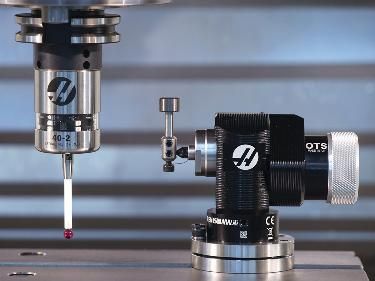With over 20 million electric vehicles projected to flood the market by 2030, the automotive industry’s relentless surge underscores the soaring demand for innovative products and technologies in the battery cell market. As this dynamic market expansion unfolds, it presents manufacturers with a formidable challenge: the need to identify the critical facets of battery cell manufacturing. Battery cells are available in diverse form factors, each employing unique architectures and chemistry formulations to achieve higher energy density, enabling more energy storage per package. These different form factors demand specialized assembly and manufacturing processes, impacting performance, storage capacity, and the charge/discharge time of the cells.
Automating the manufacturing of battery cells involves extensive considerations, including manufacturing throughput requirements. These critical considerations include ROI, the number of process steps, throughput per cell, conveyance, payload characteristics, system footprint, overall yield, yield per cell, and overall equipment effectiveness. All these factors have a direct impact on the final cost of the automation solution, ultimately influencing both the yield and the quality of the final product.
Understanding the Battery Manufacturing Process and Assembly Line
Before delving deeper into our partnership with Bosch and the critical role DWFritz Automation plays, it’s essential to outline a typical battery manufacturing process. Standard battery cell manufacturing process includes several stages: electrode production, cell production, cell module assembly, and battery pack assembly, each with its set of standard procedures.
Electrode production involves grinding and preparing base materials, mixing, coating anodes and cathodes, drying, compressing, and slitting to reach the desired form factor for cell assembly.
Cell production, the focus of this discussion, includes three processes for different cell geometries: coiling, stacking, and folding. Once these processes are completed, the cells are secured into a stable and mechanically sound product. The busbar connects the anode and cathode conductors before cells are packaged, sealed, formed, degassed in a protective environment, and tested for quality.
Following cell manufacturing, the cells move on to module assembly, where multiple cells are assembled and interconnected with cooling elements or battery management electronics before undergoing final testing. Modules are often assembled into larger battery packs, where the modules are mechanically fastened and combined with additional electronics and controls before being charged and tested for quality.
Key Process Improvements: The Role of DWFritz Automation
Our partnership with Bosch has yielded several crucial process improvements, shaping an automated battery cell assembly line. Some of these processes are common across various cell assembly and production lines, regardless of form factors. Achieving the highest possible cycle times is vital for maximizing the overall investment. To do this, we must optimize the takt times of various process modules, fully utilize each module, and employ line balancing to ensure that all tools are fully maximized.
Assembling the cathode, separator, anodes, and current collectors requires precise steps, such as the placement of individual layers, wrapping, and other interconnected processes. This becomes increasingly critical as battery sizes shrink, and energy density rises, demanding ever tighter tolerances.
Handling these delicate components with care is essential. The cathode, anode, separator, and some bus parts are fragile and must be treated delicately to prevent damage and maintain quality. Techniques such as laser welding, thermal gluing, and precision dispensing are used to connect components and layers together or facilitate material separation.
Material handling is a significant challenge given the delicate nature of battery cell production materials. Our designs incorporate precision material handling, along with nests, fixtures, and pallets, to facilitate the rapid transfer, movement, and processing of these materials within a process module and across various modules.
In-situ inspection is an integral part of our system, facilitated by high-speed machine vision systems or lasers that conduct defect detection, precise material alignment, and high-speed inspection of work-in-progress (WIP) goods. These inspections allow machine vision software to analyze WIP parts, employing 2D or 3D mapping to differentiate between good and bad parts. Only good parts proceed to the next process step.
Identifying the Key Challenges
The complexities of battery manufacturing present numerous challenges. Let’s delve into these challenges:
1. Incoming Material Variability: Variability among incoming materials, such as raw material inputs, represents a significant challenge in battery manufacturing. The materials come from various sources, each with its variations and tolerances. To address this, strategies must be developed to deal with these variations and non-conforming materials without affecting throughput.
2. Precision Assembly Tolerances: Battery cell assembly demands tight tolerances, with assembly and alignment tolerances often ranging from ±20 to 50µm. Maintaining this level of precision is essential while processing components at increasingly high speeds, as it significantly impacts the ROI of the system.
3. Electrical Interconnects: The reliability of electrical interconnects is critical for both safety and performance. Laser welding and other methods are employed to connect multiple layers. These connections require precise location of the busbar and preparation of materials for assembly, demanding careful handling to ensure good weld quality.
4. Speed and Throughput: With the ever-increasing demand for batteries, the need for higher throughput has never been more pronounced. Meeting target cycle times while maintaining accuracy and repeatability is a formidable challenge. This is not just about higher throughput but also achieving better ROI and a smaller footprint.
5. Flexibility and Scalability: In addition to speed and throughput, flexibility is crucial for a system’s ROI. Automation systems must be flexible and scalable to adapt to an evolving market with changing processes and throughput requirements.
Conclusion
Battery cell manufacturing is a highly complex process with numerous challenges. Designing and building a flexible, high-speed system that overcomes these challenges while producing a high-quality product demands a high level of technical expertise, innovation, and experience. In our next blog post, we will explore how DWFritz and Bosch-Rexroth partnered to develop a comprehensive system to meet our client’s needs.
At DWFritz Automation, we’re not just automating battery manufacturing; we’re powering the future of clean energy with precision, innovation, and excellence.
















